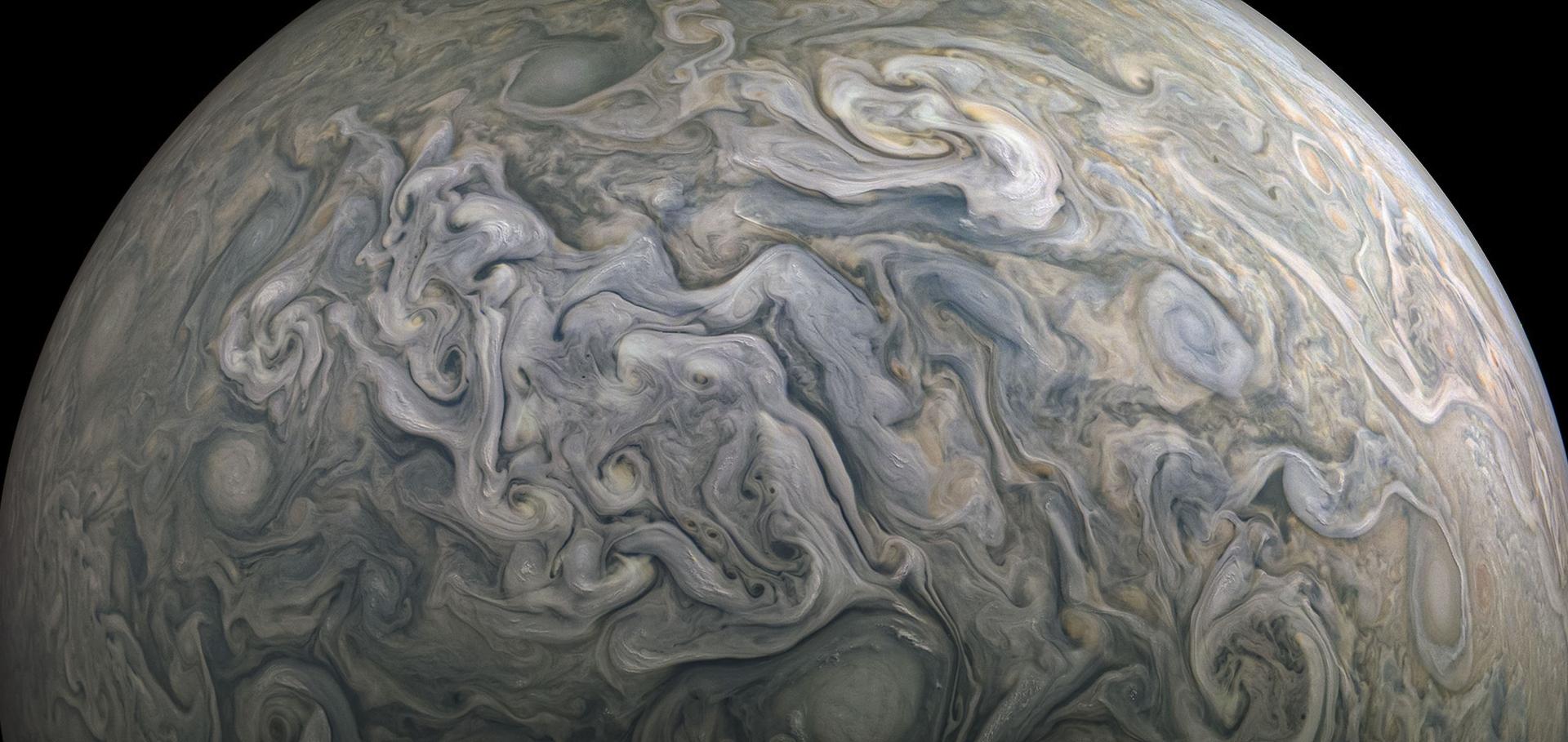Divergent convective outflow in large-eddy simulations
Atmospheric Chemistry and Physics. 23, 6065–6081, 2023
Abstract:
Upper-tropospheric outflow is analysed in cloud-resolving large-eddy simulations. Thereby, the role of convective organization, latent heating, and other factors in upper-tropospheric divergent-outflow variability from deep convection is diagnosed using a set of more than 80 large-eddy simulations because the outflows are thought to be an important feedback from (organized) deep convection to large-scale atmospheric flows; perturbations in those outflows may sometimes propagate into larger-scale perturbations.
Upper-tropospheric divergence is found to be controlled by net latent heating and convective organization. At low precipitation rates isolated convective cells have a stronger mass divergence than squall lines. The squall line divergence is the weakest (relative to the net latent heating) when the outflow is purely 2D in the case of an infinite-length squall line. At high precipitation rates the mass divergence discrepancy between the various modes of convection reduces. Hence, overall, the magnitude of divergent outflow is explained by the latent heating and the dimensionality of the outflow, which together create a non-linear relation.
Upper-tropospheric divergence is found to be controlled by net latent heating and convective organization. At low precipitation rates isolated convective cells have a stronger mass divergence than squall lines. The squall line divergence is the weakest (relative to the net latent heating) when the outflow is purely 2D in the case of an infinite-length squall line. At high precipitation rates the mass divergence discrepancy between the various modes of convection reduces. Hence, overall, the magnitude of divergent outflow is explained by the latent heating and the dimensionality of the outflow, which together create a non-linear relation.
Divergent convective outflow in ICON deep convection-permitting and parameterised deep convection simulations (under review, as of Sept 2023)
Pre-print under review for Weather and Climate Dynamics, Copernicus
Abstract:
Upper-tropospheric deep convective outflows during an event on 10th–11th of June 2019 over Central Europe are analysed from simulation output of the operational numerical weather prediction model ICON. Both, a parameterised and an explicit representation of deep convective systems are studied. Near-linear response of deep convective outflow strength to net latent heating is found for parameterised convection, while coherent patterns in variability are found in convection-permitting simulations at 1 km horizontal grid spacing. Furthermore, three hypotheses on factors that may affect the magnitude of the convective outflow are tested in the convection-permitting configuration: organisation of convection through dimensionality of the systems, organisation of convection through aggregation and convective momentum transport.
Convective organisation and aggregation induce a non-linear increase in the magnitude of deep convective outflows with increasing net latent heating, as shown by the confidence interval of the best fit between power transformed net latent heating and detected magnitude of outflows. However, mixed and weaker than expected signals are found in an attempt to detect the representation of dimensionality of the convection and its consequences for the divergent outflows with an ellipse fitting algorithm that describes the elongation of the intense (convective) precipitation systems. As opposed to expectations, convective momentum transport is identified to slightly increase the magnitude of divergent outflows in this case study.
Convective organisation and aggregation induce a non-linear increase in the magnitude of deep convective outflows with increasing net latent heating, as shown by the confidence interval of the best fit between power transformed net latent heating and detected magnitude of outflows. However, mixed and weaker than expected signals are found in an attempt to detect the representation of dimensionality of the convection and its consequences for the divergent outflows with an ellipse fitting algorithm that describes the elongation of the intense (convective) precipitation systems. As opposed to expectations, convective momentum transport is identified to slightly increase the magnitude of divergent outflows in this case study.
Evolution of squall line variability and error growth in an ensemble of large eddy simulations
Atmospheric Chemistry and Physics. 23, 565–585, 2023
Abstract:
A chain of processes is identified that regulates much of the spread in an ensemble of squall lines in large eddy simulations with tight initial conditions. Patterns of gravity wave propagation de-correlate and restructure the initial condition spread until a second phase of convective initiation is taking place, i.e. after 30 min of simulation time. Subsequently, variability in this convective initiation and mass overturn is associated with differences in cold pool propagation within the ensemble (propagation at 2–4 m/s.
An ensemble sensitivity analysis reveals that anomalies in squall-line-relative flow with respect to the ensemble mean are also associated with the secondary convective initiation. Downdraughts are fed with extra air by a convergence zone on the rearward flank of the updraughts. An analysis of difference growth within the ensemble shows that a substantial proportion of variability is explained by cold pool propagation contrasts during this stage (30–80 min), which is partly removed when a feature-relative perspective is taken. The patterns of coherent variability exist on the timescale of an hour and dissipate subsequently (80–100 min).
An ensemble sensitivity analysis reveals that anomalies in squall-line-relative flow with respect to the ensemble mean are also associated with the secondary convective initiation. Downdraughts are fed with extra air by a convergence zone on the rearward flank of the updraughts. An analysis of difference growth within the ensemble shows that a substantial proportion of variability is explained by cold pool propagation contrasts during this stage (30–80 min), which is partly removed when a feature-relative perspective is taken. The patterns of coherent variability exist on the timescale of an hour and dissipate subsequently (80–100 min).
Probabilistic thunderstorm forecasts using statistical post-processing: Comparison of logistic regression and quantile regression forests and an investigation of physical predictors
Technical report published by KNMI and University of Utrecht
Abstract:
Probabilities of thunderstorm occurrence and conditional probabilities of lightning intensity over The Netherlands are forecast using statistical post-processing with predictors derived from the operational non-hydrostatic numerical weather prediction model Harmonie, at lead times up to 45 hours. Quantile regression forests (QRF) is compared with logistic regression (LR) for thunderstorm occurrence forecasts and with extended LR for lightning intensity forecasts. Using different sets of predictors that these statistical methods may select, it is demonstrated that pre-selection of predictors based on physical understanding and simultaneously exploiting QRF as machine learning tool can help improving statistical post-processing models. QRF is demonstrated to be beneficial for the predictions, with more skillful forecasts than LR for thunderstorm occurrence. Lightning intensity predictions are influenced by inhomogeneity of lightning detection datasets; despite inhomogeneity, skillful predictions can be made with both extended LR and QRF. The regional maximum of Modified Jefferson index and most unstable CAPE are found as best thunderstorm occurrence predictors and the regional minimum of Bradbury index and maximum of K-index emerge as best for lightning intensity. Neither most unstable CAPE nor microphysical predictors (graupel, snow) are essential for thunderstorm occurrence prediction.


